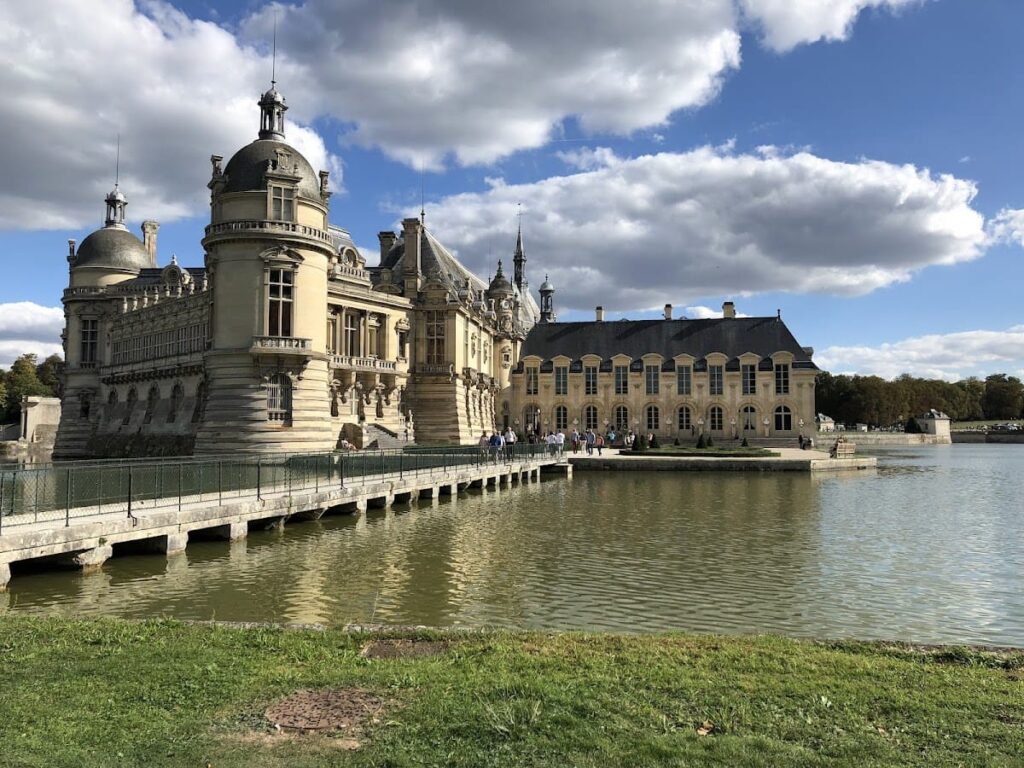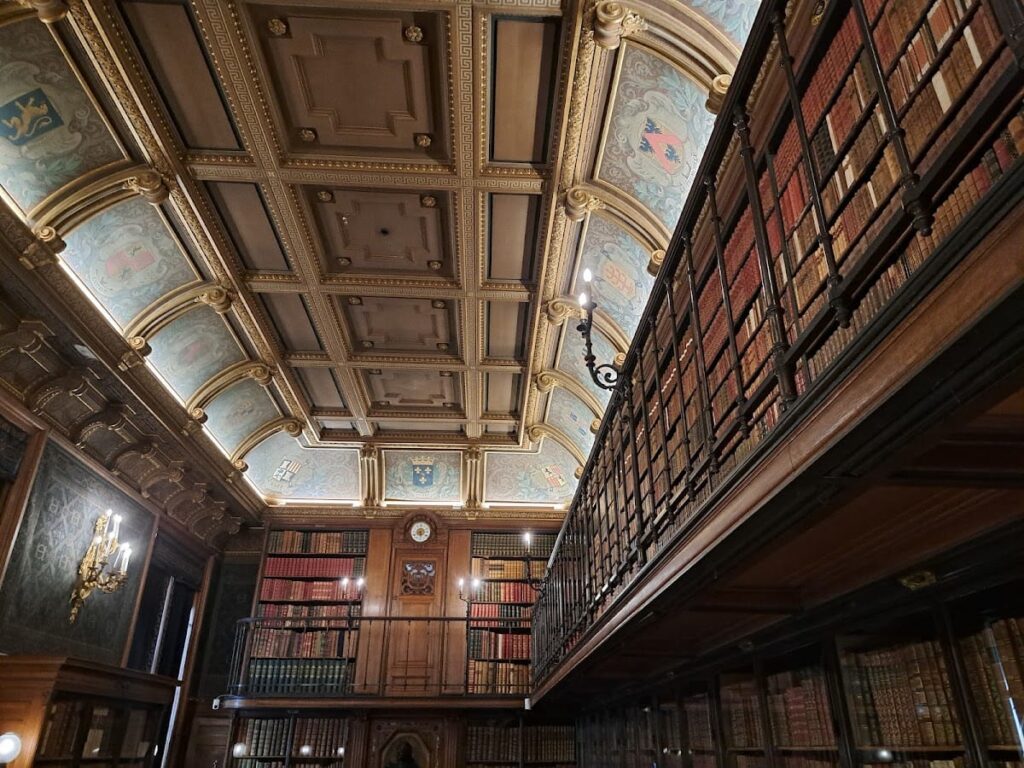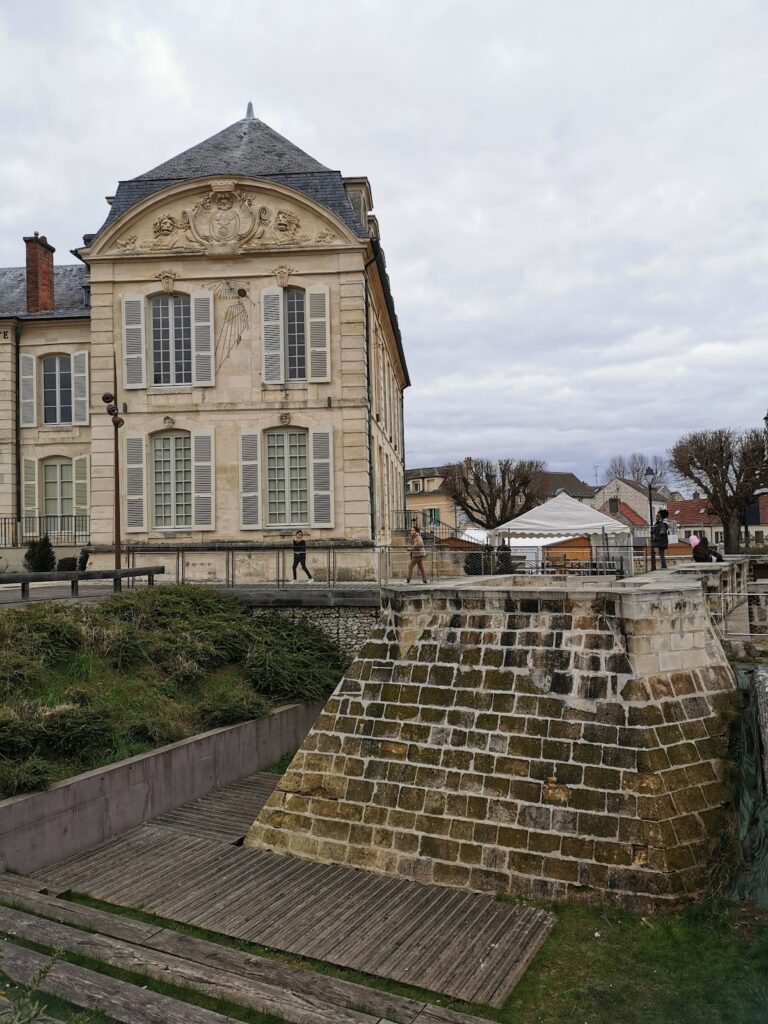Château de Chantilly: A Historic French Estate and Museum
Visitor Information
Google Rating: 4.6
Popularity: Very High
Google Maps: View on Google Maps
Official Website: chateaudechantilly.fr
Country: France
Civilization: Medieval European
Remains: Military
History
The Château de Chantilly stands in Chantilly, Oise, France, originally established as a medieval fortress. It was built on marshy land in the Nonette valley to control the route between Paris and Senlis. The earliest known owner was Guy de Senlis, steward to King Louis VI, in the late 11th century. His family maintained possession until the 14th century.
In 1358, the fortress was looted during the Jacquerie, a peasant revolt. Later, in 1386, Pierre d’Orgemont, chancellor to Charles V, acquired the property and rebuilt the castle between 1386 and 1394. The d’Orgemont family held Chantilly for three generations until the late 15th century.
In 1484, Pierre III d’Orgemont left Chantilly to his nephew Guillaume de Montmorency. The Montmorency family owned the estate from the 15th to the 17th centuries, modernizing the castle extensively. Notable renovations included work by Pierre Chambiges in 1528 and the construction of the Petit Château by Jean Bullant in 1551. The Montmorency also created the first gardens and built seven chapels, two of which still stand in the park. Henri I de Montmorency built the Maison de Sylvie in 1604, which later sheltered the poet Théophile de Viau until his death in 1626.
After Henri II de Montmorency was executed in 1632, King Louis XIII confiscated his properties. While some lands were returned to his sisters, Chantilly remained under royal control until 1643. That year, Anne of Austria restored the estate to Charlotte de Montmorency, wife of Henri II de Bourbon-Condé, transferring Chantilly to the Condé family.
The Condé family held Chantilly from the 17th through the 19th centuries. During the Fronde civil wars, Louis II de Bourbon-Condé, known as “Le Grand Condé,” had the estate confiscated in 1652 but regained it in 1659. He then resided there and commissioned the famous landscape architect André Le Nôtre to design the gardens, including the Grand Canal constructed between 1671 and 1673. The Grand Condé hosted prominent artists and writers, such as Molière, who premiered his play “Les Précieuses ridicules” at Chantilly in 1659. The steward François Vatel is traditionally linked to the creation of crème Chantilly during a royal visit in 1671, though this story is uncertain.
Further renovations occurred under architects Jules Hardouin-Mansart and Jean Aubert in the late 17th and early 18th centuries. Louis IV Henri de Bourbon-Condé built the Grandes Écuries, a grand stable complex, between 1719 and 1740.
During the French Revolution, the estate was confiscated by the state. The Grand Château was emptied and used as a political prison during the Terror in 1793. Much of the park was neglected or sold, and the main château was largely demolished in 1799, leaving only the Petit Château and Grandes Écuries intact.
Under the Napoleonic Empire, Chantilly became part of Hortense de Beauharnais’s apanage. The last prince of Condé, Louis VI Henri, reacquired the estate in 1814 but made only minor repairs. His son created an English-style garden between 1817 and 1820.
In 1830, Henri d’Orléans, duc d’Aumale, inherited Chantilly, which was then mostly in ruins. He began plans to rebuild the château in 1846 but was exiled in 1848. During exile, he collected extensive art and manuscripts. Returning in 1871, the duc d’Aumale reconstructed the Grand Château from 1876 to 1882 under architect Honoré Daumet. The new building served as both a residence and a museum for his collections. In 1886, he bequeathed the château and its collections to the Institut de France, founding the Musée Condé.
Since 1963, the château has been protected as a historic monument, with further protections added in 1988. It remains a significant cultural site with ongoing conservation efforts supported by international donors.
Remains
The Château de Chantilly’s layout includes the Petit Château, the reconstructed Grand Château, the Château d’Enghien, the Jeu de Paume, the Maison de Sylvie, and the Grandes Écuries, all set within extensive gardens and parkland.
The Petit Château, built in 1551 by Anne de Montmorency and architect Jean Bullant, is the oldest surviving structure. It incorporates the bases of medieval towers and contains grand apartments on the first floor. The ground floor features decorations from the early 18th century by Jean Aubert and 19th-century romantic paintings by Eugène Lami. These interiors remain largely preserved.
The Grand Château was mostly destroyed during the Revolution, leaving only foundations and cellars beneath a triangular terrace. It was rebuilt in the late 19th century by Honoré Daumet. The new design includes a central chapel, two towers flanking the main body, and a circular library topped by a dome.
The Château d’Enghien, constructed between 1769 and 1772 by Jean-François Leroy, is a long classical-style building near the forest. Originally intended for guests, it consists of four adjoining apartments with triangular pediments and a balustrade. Today, it houses the Musée Condé’s curator and conservators.
The Jeu de Paume, a tennis court built from 1756 and inaugurated in 1757, features façade sculptures by Henri-Nicolas Cousinet. It includes the playing hall and an entrance room for players. Converted in the 19th century into an exhibition space, it now displays a scale model of the 17th-century château and park.
The Maison de Sylvie, erected in 1604 by Henri I de Montmorency and later rebuilt in the Mansart style by Henri Jules de Bourbon-Condé, was transformed again between 1881 and 1886 by Honoré Daumet. It features a rococo polygonal rotunda salon and contains notable 18th-century wood paneling and hunting-themed paintings. This building is generally closed to the public.
The Grandes Écuries, designed by Jean Aubert and built from 1719 to 1740, stretch 186 meters and are crowned by a 28-meter-high dome. They could accommodate 240 horses and 500 hunting dogs. The prince of Condé hosted grand dinners beneath the dome, attended by Louis XV and other monarchs. Since 1982, the stables have housed the living horse museum, which underwent renovation in 2013.
The château’s gardens cover 115 hectares, including 25 hectares of water features and 60 hectares of the Parc de Sylvie. The surrounding Chantilly forest spans 6,310 hectares. André Le Nôtre designed the main gardens with two perpendicular axes: a north-south axis aligned with the Montmorency terrace and an east-west axis along the 2.5-kilometer-long Grand Canal. The parterres north of the château were reshaped in the 19th century and feature stone vases and statues of historical figures.
The Petit Parc, or Parc de La Caboutière, lies on a limestone plateau and was laid out by Le Nôtre with alleys and groves connecting to the forest. It once contained a large spiral “game of the goose” board about 2 kilometers long, with surviving elements like a bridge and well, though it was leveled around 1770.
The Anglo-Chinese garden, created in 1772 by Jean-François Leroy east of the parterres, includes small ornamental buildings and canals designed for pirogue boating. A rustic hamlet of seven houses was added in 1774, five of which survive.
The English garden, designed by Victor Dubois in 1817 along the road to Vineuil-Saint-Firmin, incorporates remnants of Le Nôtre’s earlier works. It features winding paths and the surviving “Temple of Venus” folly.
In November 2022, a fire broke out in a technical corridor beneath the terraces, leading to visitor evacuation.
The estate holds a rich collection of paintings by masters such as Raphael, Botticelli, and Delacroix. Its library contains approximately 30,000 volumes and 1,500 manuscripts, including the famous Très Riches Heures du Duc de Berry. Modern restorations have been supported by international donors, including the Aga Khan Foundation, with major conservation completed by 2008.










